YOU CAN ONLY HATE
SOMETHING
IF YOU LOVED IT BEFORE
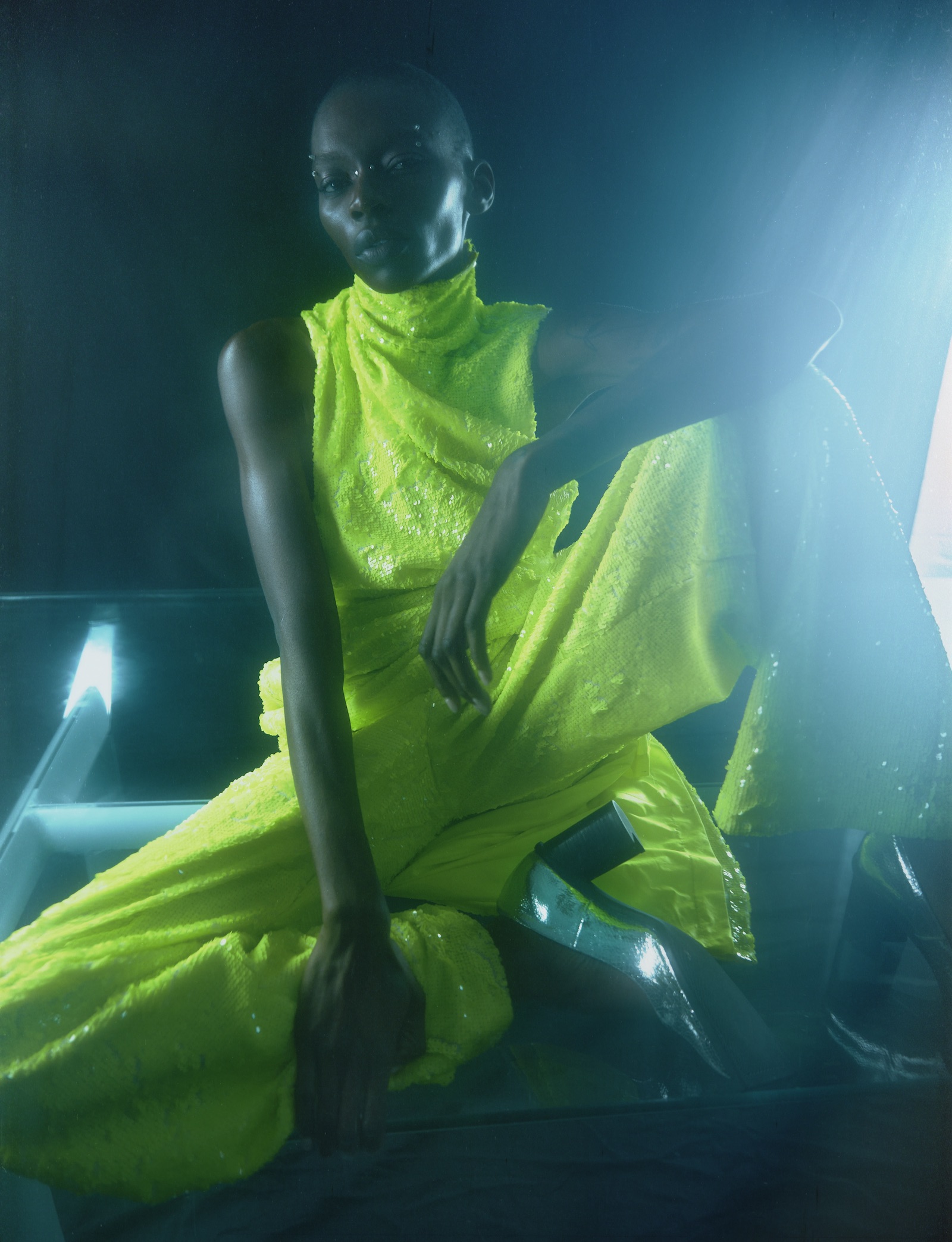
Enchanted by all things living, AMSTERDAM-based designer NINAMOUNAH LANGESTRAAT has forged a fashion brand existing within its own anthropological bubble. Perceiving humans and animals alike, her collections engage with this dialogue through a nurturing narrative of radical acceptance. Darkly humorous and stoic by nature, Langestraat’s love (and sometimes hate) leads to collections hailed for their rebellious and polarising take on the traditional “fashion” landscape. “I like to break the rules — because otherwise, life is quite boring.” Glamcult has been in an ongoing conversation with the trailblazer since the very beginnings, so in light of her PARIS FASHION WEEK debut and AW collection, The Hunt, we sat down — a glass of wine in hand — and formalised our many chit-chats to catch you up on the wild and wonderful world of Ninamounah. Alongside this interview sneak peek (?), The Hunt collection will be popping up at Glamcult Store in Amsterdam, for more information see below!
Let’s start with the history. How did the brand begin?
Around five years ago I graduated from the Gerrit Rietveld Academie. I started in the textile department but shifted in my graduating year because I thought it was too soft and too slow. It was just too comfortable a place to be in, and I needed more. I wanted to do fashion, and later won the Frans Molenaar Couture Award, and invested all of that money into the Ninamounah company.
When did you win this? Right after graduating?
A month after, but the award doesn’t exist anymore. I was the last one. I took the last money, ha-ha! Gc Was there a moment when you felt the Ninamounah identity come into existence? When did it take off for you? N It all kind of came and went in waves. My starting point was to feel like I “belong” somewhere in the world, and have a purpose. I wanted my identity or narrative to be strong enough that anyone could recognise it. Like good handwriting. I was applying for another competition and I had to make a logo. I was all alone, just sketching, making these awful drawings. I have such a love for advertisements, and I think cigarette branding is a core of advertising (though now disappearing). I wanted the feeling that when you see my brand name, it also triggers your addiction. So, when I landed on the logo with the MARLBORO font, it was like, “Oh, this is already like 50% of my branding communication.” It was exactly what I needed, also thinking about the history of the Marlboro Man, masculine dudes and cowboys. It all made sense, so I guess this was my “wow” moment.
When did that occur?
Like, six months after my graduation. But another big moment for me was my show in Dam Square, in that old church [The Nieuwe Kerk]. It was fantastic.
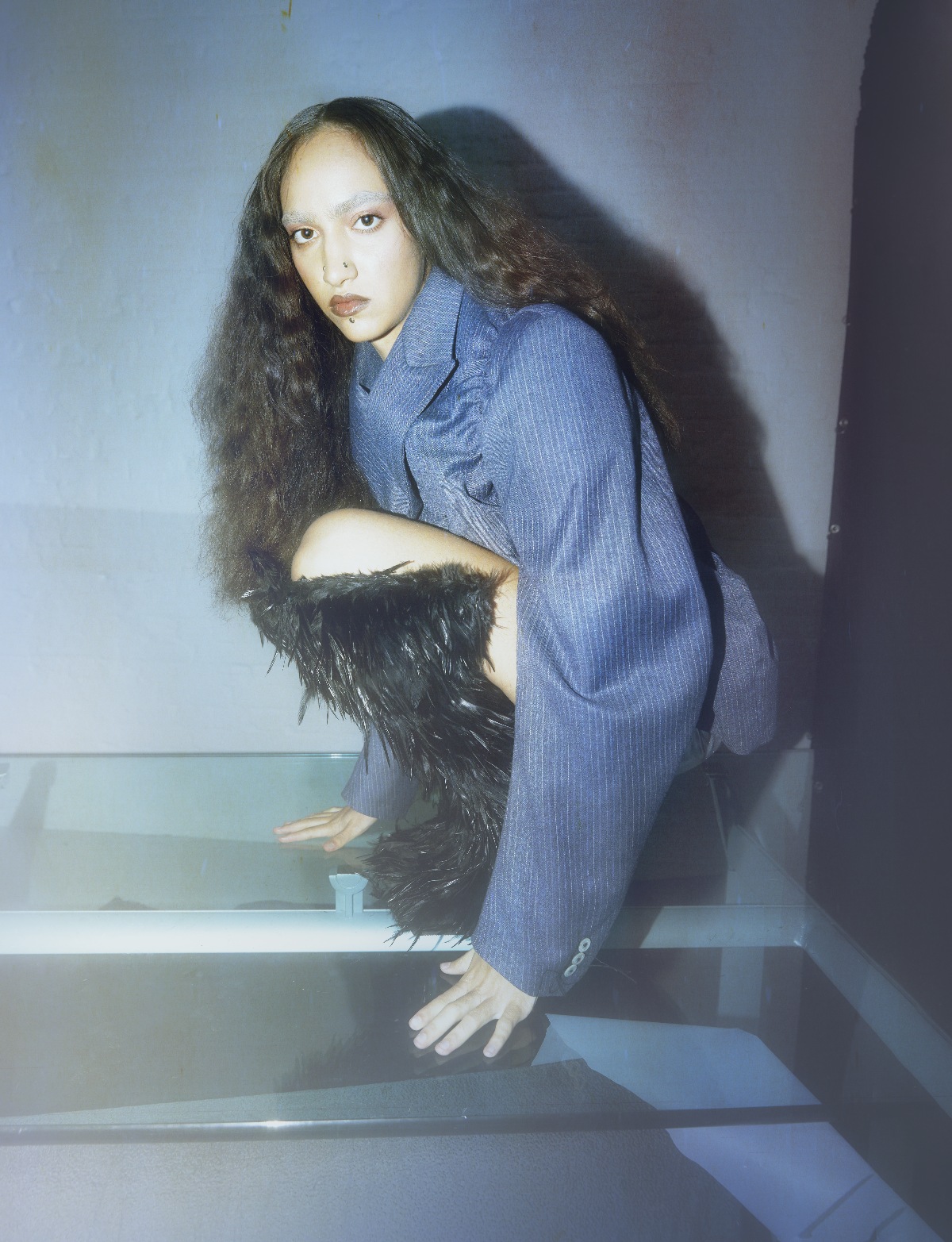
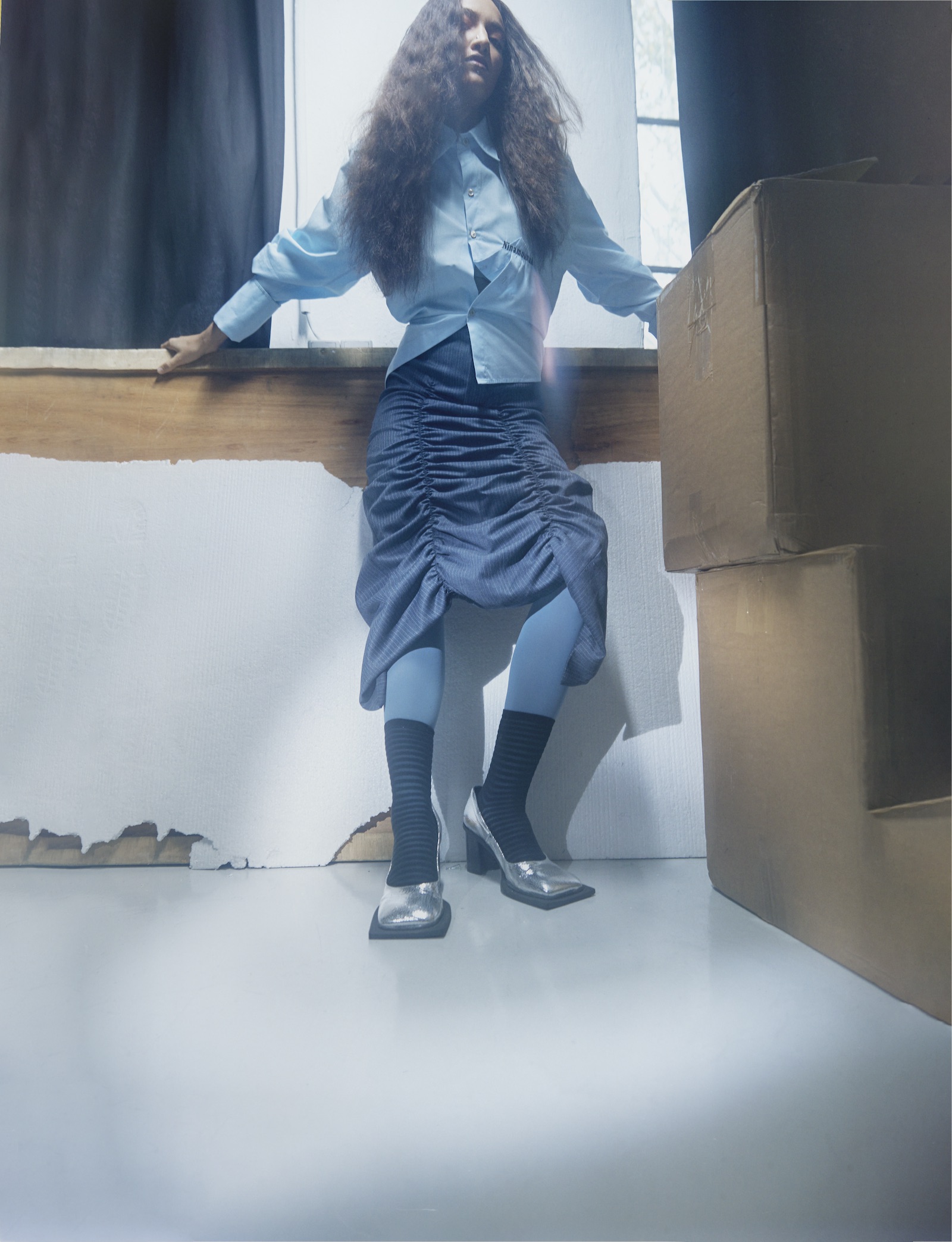
The one with the snails?
Yes. The one with African snails. The church was filled with friends and family and people who wanted to see my work. I just felt loved and seen, which is the only thing that I had always wanted out of it. Being on the official list of Paris Fashion Week recently has also been an insane moment. It was hilarious — we were in between Louis Vuitton and Miu Miu — and I would still think that I must have made a mistake somewhere.
What are some of the significant lessons you’ve learnt on your journey?
I’m from Rietveld, but 80% of my work now is making Excel sheets. This may be a bit of a lame answer, but business-wise I learnt a lot. I just wish I had asked for more help first. Not making the mistake, and then asking for help. A lesson would be to listen more to the people who already experienced certain roads. However, I think it’s good to make mistakes; it’s the core of growing. But it’s already a very tough job and a sensitive position to be in, so sometimes you just don’t have the space to make the mistakes.
Almost as if there’s no room for mistakes anymore…
Yes. But within this, practising is nice. It was very nice to practice during the fashion week in The Netherlands, for example—then get the fuck out of there and do it well in Paris.
As an Amsterdam-based brand, how do you feel about this labelling? It’s always been a dichotomy for Dutch designers; they want to be here, but they want to be in Paris at the same time. How do you feel about it?
It was a great practice space to be here. Also, there’s a lot more room to fail here. The Netherlands’ fashion scene is so small, you know everyone. It’s easier to kind of explain your mistakes, there’s more empathy here. But you can’t survive if you stay here as a fashion designer. You have to get the fuck out. And I don’t think anyone has the energy to do both, to be here and there. I think you need to focus your energy and find your moment. But it’s also important to have a balance of people, old and new, who you interact with. That’s why I think Paris is such a good place for that. I would say London too, but with Brexit, I don’t believe that anymore. I think Paris and Milan are the places right now. I just love the scene in Paris, and also a lot of my buyers come from there.
So, The Hunt collection. You don’t work in seasons. Why is that?
We’ve always said that we don’t work in seasons, and we still don’t. But we do call it “spring”, “summer” or “autumn” to make sure that there’s a balance in the garments. But with climate change, are you fucking kidding me? We’re in stores all over the world, with completely different climates, you know? I think it’s very closed-minded to stick to seasons. Maybe if you only sell in the Netherlands, you can do that. When it’s always the rainy season.
From a sustainability point of view (and considering how the whole fashion system works), it’s an interesting approach that many designers are taking at the moment. Is it also a choice on a design level?
I see collections as a body. The blazers and the trousers are more like skin. Dresses and blouses are more like blood. So there are all these layers, and I always start from the core. Building it all up — from the skin to the bone. That makes a good balance, it’s how we always do it. If you only do summer, you only get blood. So, it’s not a complete story for me.
The Hunt is a playground of experimental materials. The metallics and faux fur, for example
— We call it faux hair.
Which is better?
I started working with human hair because of my research into Freud. He related fir to pubic hair; soft, exotic and sexualised. And I feel that when I see someone in a fur coat. With the hair, we also created a lot of references to hunting. We had scars and a lot of very big diagonal seams in the fur. We also crossed the grain lines in the fur so that the hairs would go against each other, which I think is a very beautiful effect. The Hunt is very sexual and very aggressive — my two favourite things. Going into the metallics, silver for me is a bit more like armour. We also worked with sequins. I think if you have mammals, you should also have fish and reptile structures, so we added this with sequin and glittery material.
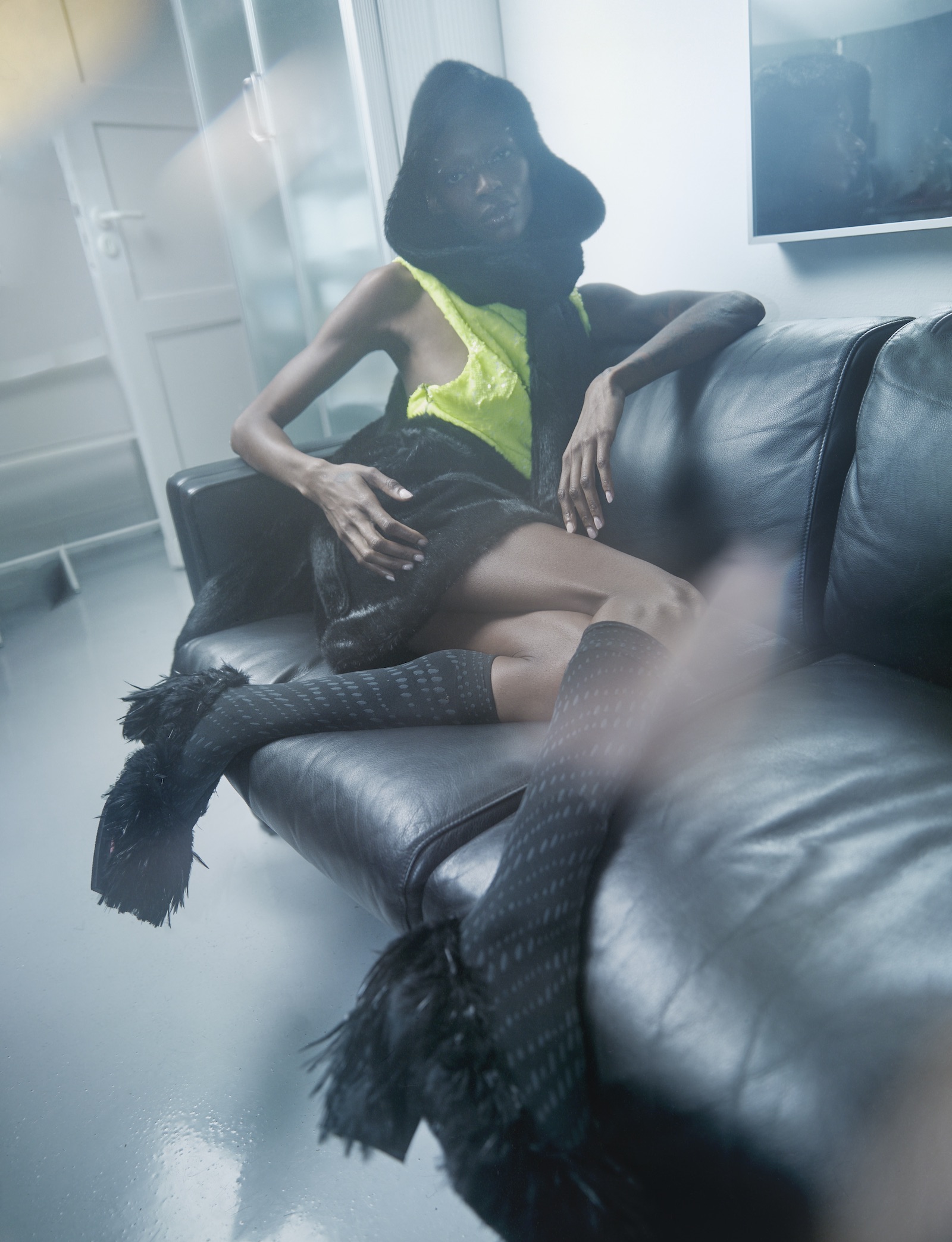
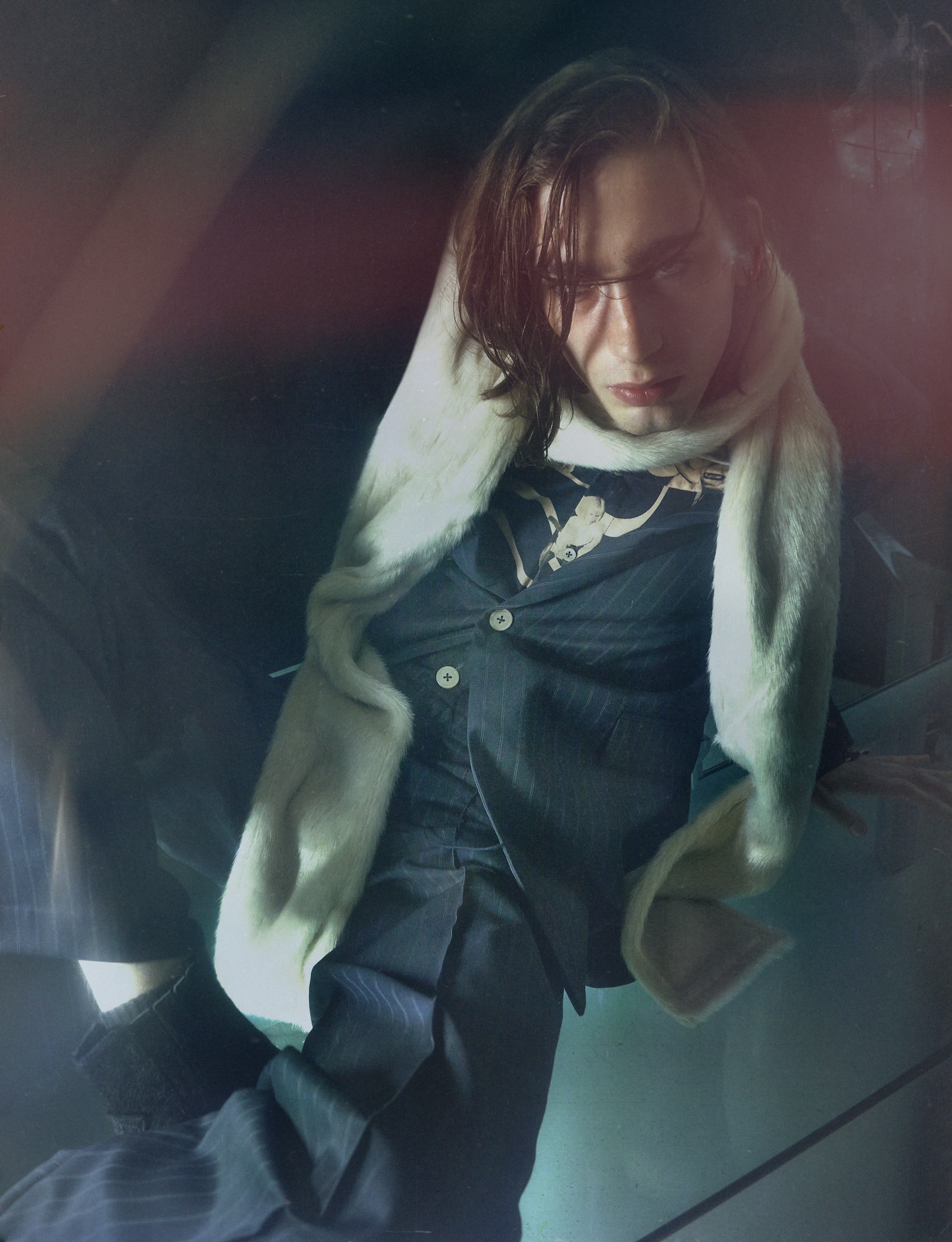
With this “sexual and aggressive” energy of the collection, what sparked the narrative?
There was just one thing: I adopted a new dog. His name is Bear, and he’s very important to me. He had just come from the shelter, so I ordered him online. He comes from Romania and I had no idea what his character would be like. I was just in love with what he looked like. The whole colour scheme of the collection is based on the colour of his fur. We had a few issues with him — he was hunting some of the interns here in the studio. So, I did a lot of research on hunting — how to help him stay an animal without going too far. I completely lost myself in the research.
What were the fascinating things you found?
It’s not one specific thing. But mainly the communication of the hunt, mating calls and so on — it’s all so broad. What I loved about hunting is that you murder what you’re hunting, but you also love that thing so much. It’s out of love, not out of hate. The killing, the penetration, the chasing — it’s almost like a dance. The whole dance of the hunt is magical.
We’ve alluded to it a lot, but could you explain further the biological and anthropological research behind your work?
I wanted to be a biologist, but I was very disappointed in the work of a biologist itself. I still see myself as a biologist, I just use fashion as my medium (which also acts as an excuse to do my research and come up with concepts). All of my research comes from biology. It works so well because it’s so close to me. I’m such a nerd, I really go to the core. I think it’s a beautiful translation to use; it always corresponds to each other, and it’s never on its own.
For example?
First, we had The Hunt, then we had the gathering or The Gatherers. These and all the collections are a conversation with each other, which I enjoy.
These collections are not just about biology; they’re also about human nature and animal relations.
It’s also about my upbringing and shame and what makes you human. It’s also about travelling and experiencing different cultures. My ultimate life rule is to never apologise, or never to feel too big. Never to feel like I’m filling too much space. It’s really important to stay true to your worst and your best parts of yourself and celebrate them without shame.
Do you have a goal when you begin your research? Or is it an ongoing fascination?
There’s no answer. It’s always changing and constantly evolving. That’s because there’s no answer in nature, there are only questions. The goal of my work is to stay curious. To suck up all the knowledge I can. I also want to be able to use fashion to work with anyone I want — an architect, sports personality or whoever. Fashion is a spectacular handshake, it’s limitless. I think the goal within the brand for me is to exist and see my friends wearing and understanding the garments. Even strangers on the street! That gives me the biggest electric shock in my body, it’s such a nice feeling. Like a heroin hit. Taste, particularly in clothing, is such a difficult (and tiny) thing, it’s so nice when you share that with others. It’s so nice to see your garments, or shoes, styled with things you would never have thought of. Or even in horrible ways…
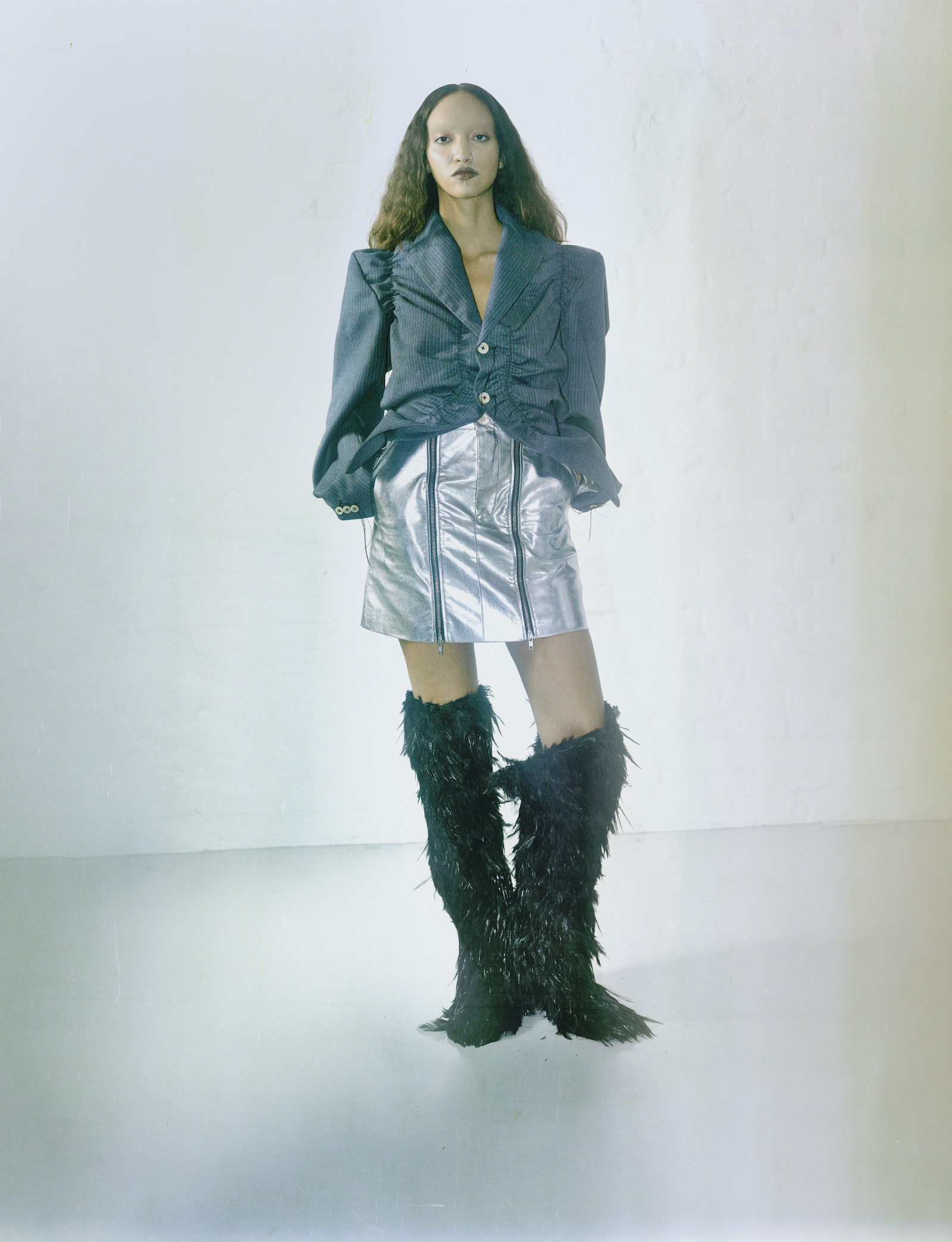
Your approach to “unisex” clothing is also very interesting. It’s not about being “androgynous”; it has nothing to do with gender. Can you tell us a bit more about that?
I just don’t make clothes for genitals; I make clothes for equals — or animals. It’s so not important, gender is boring. I always get the chills when people ask, “Do you also have this for women?” In Paris it’s very binary, there are only two options and it’s very traditional. But within our shows, looking at our models and the people that we work with — this absence of gender, it’s natural.
Is that difficult? The feeling you have to comply with this “system”?
I like it when it’s rough and difficult, I like to break the rules — because otherwise, life is quite boring. So, I’m happy to be a part of the movement, breaking it down. I think it’s very special to be within this narrative and one day be able to tell people, “Well, back in the day….’ It’s tough, but it’s worth it.
Clothing is culture, what does the Ninamounah culture represent for you?
I guess we give people a uniform to be shamelessly themselves. That is, for me, what it is all about: to be your true self. I love the melting and clashing of stereotypical uniforms and making them into whatever we want. A garment is just a tool. I often see people putting on a dress — who have never done so before — and watch their entire body language change. They stand straight, their shoulders open. It’s so beautiful to be able to give someone that tool to broaden their view on shame.
How do you see the Ninamounah brand today, and where do you want it to go?
For me, it’s really important to have a conversation with our clients, people who wear Ninamounah. I like the responses I get, especially when I do pop-ups. You can see the audience and reflect on the work again. I would also like to have a few physical stores of my own. Or, to keep popping up and travel again! To have stores wherever and whenever you want. That would be fantastic. Maybe get a farm, and source our materials. I think that would be interesting. I struggle still with the whole “runway” thing. We’re currently talking about different ways to present ourselves — maybe a physical newspaper, or a concert. We’re still playing around a lot with that. It could go a lot of ways. My focus right now, however, is the store idea. It would be so great to have a store/gallery.
Or maybe even more collaborations? Who would be your dream creative to partner with?
Midas Dekkers. I’m his biggest fan.
I loved his programmes and his books. Is he still active?
He recently-ish wrote a book about the human race that many people thought was quite racist. I thought it was quite interesting, but of course, he’s from a completely different generation — so he says things quite bluntly and flatly. I mean, I’m not going to talk to him about my period — because I know what he thinks about that — but nobody’s perfect, and I don’t want to change him. It would be cool if he would tattoo me. Afterwards, I could just die. That’s also what I’m flirting with at the moment, the idea of doing collections more often with people who are completely not from fashion — researchers, anthropologists, you know? To expand my research broader, as right now I’m doing it all by myself. I think I could also be more focused, and find more weird answers to something like birds’ behaviour. Then I would do not only a collection but also a paper.
A body of work which intersects all kinds of disciplines into one.
Yeah, it would be great to make more work than just a collection. We recently expanded into bags, which for me was quite new. It’s a completely different world. It would be great if we could even do furniture, perfume, or a book… ceramics, whatever the fuck we want.
Why not? Why aren’t you doing that?
We want to do that. But there are so many shifts within the company right now that I want this [the fashion part] to be solid. I want my roots to be strong and outgrown, then I can come together with people. But we’re doing it, now we’re a new family. Tim, my boyfriend, is also working here with me, and we have some cool kids who are coming in and out. But it would be cool to invite someone completely outside the fashion world — maybe someone who also looks horrible!
When you’re old and looking back on your career, what’s the emotion/ feeling you would like to have about your work?
I think I’ll think more about the people that I worked with, not necessarily the collection or the shows. I would like to laugh and cry at the same time. I mean, at the moment, one day I love it, one day I hate it — and it’s never two days of love and three days of hate; it’s very much on and off. Because of this, I don’t think I’ll live very long. Fashion is so stressful, heart-attack-inducing and lonely. It’s very lonely. I think it’s smart to start young, quite young and look good. It’s like having an ex-partner who you used to love a lot; you still feel that love but you don’t know how to place it anymore. It sounds negative, and that is not entirely true of course. But of course, you can only hate something if you loved it before. And that’s my job.
Speed questions: favourite current trend?
Tamagotchi!
That’s not current!
Are you calling me old?! I love to take care of things. I LOVE Tamagotchi. I had a coat, and I put all the toy rings through my coat; I was one big Tamagotchi with all different generations to take care of… I wish I had a Tamagotchi right now.
So, you just like to nurture?
It’s also nice when you’re not giving them food — when you kill them. Tamagotchi and Pokémon are similar because they all evolve into a creature that you don’t know yet, it’s exciting what it’s going to be. I’m sure every biologist loves Tamagotchi. But, going back to the question, I have no idea what trends are going on. I know TikTok, but I don’t understand it.
If you were at a party, who would you like to see?
Midas Dekkers — of course — and Madonna. Or, Midas Dekker and Grace Jones. But I think I would drink Midas Dekkers out. Or maybe, Madonna, Grace Jones Midas Dekker and Freud!
What inspires you most?
Mistakes.
This Friday we welcome Ninamounah to the Glamcult Store!
Join us for a little toast from 17:00-20:00
Dollebegijnensteeg 5, Amsterdam

Words by Rogier Vlaming
Photography by Fredrik Altinell @ HALAL
Styling by Camille Ange Pailler
Hair by Felix Stösser
Make-up by Nikolas Paroutis
Modelled by Nadia Hakiki @ Girlsclubmanagement, Naomi Larbi @ Izaio Management and Nick Schotten
ALL CLOTHING NINAMOUNAH FALL ‘22
Notifications